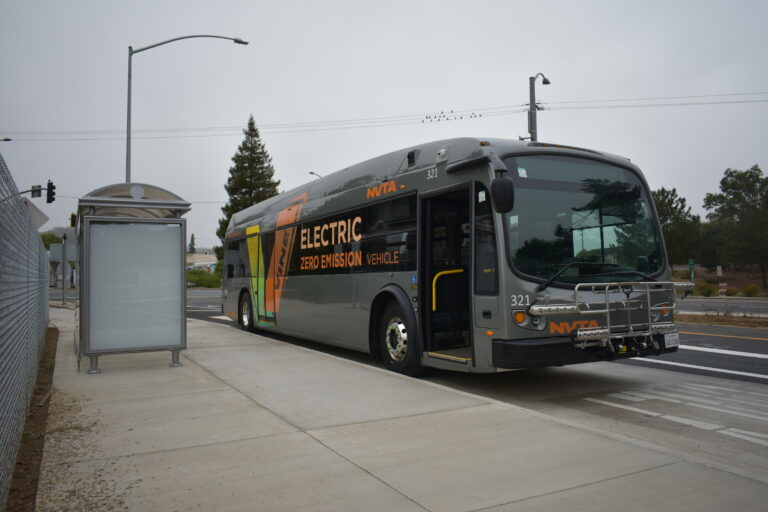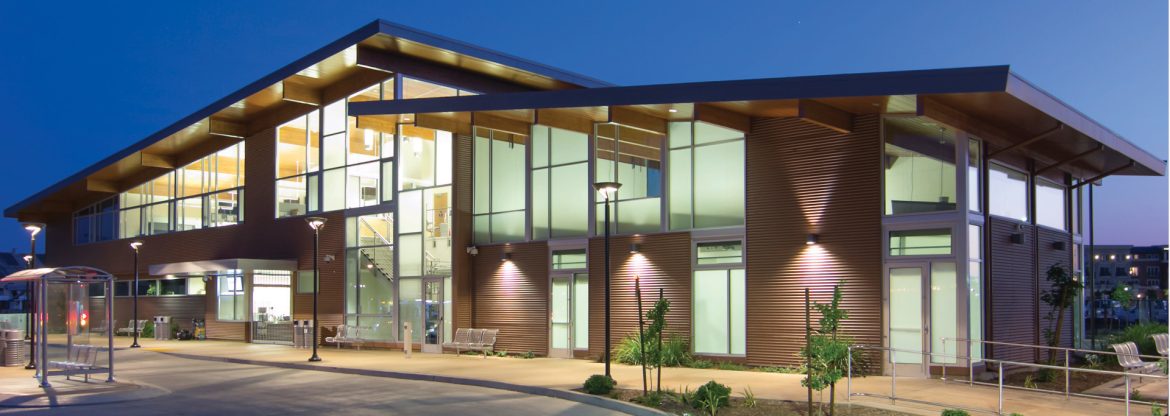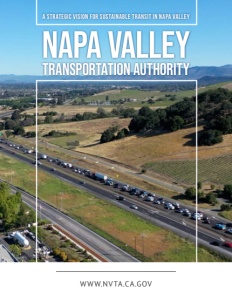Napa Valley Transportation Authority (NVTA)
A Strategic Vision for Sustainable Transit in Napa Valley
Revolutionizing regional transit with cutting-edge technology, sustainability initiatives, and a deep commitment to community service
In the heart of California’s renowned wine country, the Napa Valley Transportation Authority (NVTA) emerges as a vital lifeline, seamlessly connecting the picturesque towns dotting the landscape with the bustling energy of the greater Bay Area. Under the stewardship of Rebecca Schenck, Program Manager of Transit, NVTA orchestrates a symphony of mobility solutions that resonate with the unique needs of its community. With a fleet that includes fixed-route services, on-demand shuttles, and paratransit offerings, NVTA not only caters to the daily commuter but also ensures accessibility for all, reinforcing its role as an indispensable thread in the fabric of Napa Valley’s social and economic life.
Schenck begins by shedding light on the operational ethos of NVTA, emphasizing the integration of the Vine Transit system within Napa Valley’s identity. “We operate both fixed routes and on-demand shuttles across the county, ensuring seamless connectivity within our five incorporated jurisdictions and extending our reach to neighboring regions,” she explains. This strategic network facilitates local commutes and bridges the gap to the larger Bay Area, thereby knitting a tapestry of accessibility and convenience.
NVTA’s move to a new Vine Maintenance Facility is a significant leap toward self-reliance and sustainability. Schenck describes the transition as “a pivotal step,” enabling NVTA to better meet operational needs with a space designed specifically for them. This facility is not just an upgrade but a strategic move to support future growth, especially in adopting eco-friendly transportation solutions, like electric vehicles (EVs), in response to California Air Resources Board mandates.
Schenck emphasizes the facility’s role in accommodating electric buses, highlighting its medium-voltage electrical system capable of charging up to 12 EVs and reducing NVTA’s carbon footprint. Additionally, installing a one-megawatt solar system at the facility shows NVTA’s commitment to renewable energy. Schenck notes, “We’re laying the groundwork for a future where our energy needs are increasingly met through sustainable sources.” This plan includes preparing for hydrogen fuel technology and positioning NVTA at the forefront of innovation.
Strategic Workforce Planning in the Face of Expansion
Napa Valley Transportation Authority is gearing up for a significant shift with its move to a new, state-of-the-art maintenance facility, and the conversation naturally veers toward the implications for its workforce. With the anticipation of expanded operations, the question arises: How will NVTA’s staffing needs evolve in this new chapter?
Schenck underscores the current stance on NVTA’s workforce strategy, emphasizing a cautious approach to expansion. “At the moment, we are maintaining our existing team structure, except for adding a utility worker to manage the increased square footage of our new facility,” she clarifies. This decision reflects a deliberate pacing, balancing the excitement of growth with the reality of operational demands, funding constraints and staffing challenges.
Facing a tight labor market for skilled trades, NVTA’s Schenck highlights the challenge: “We are essentially striving to keep our head above water amidst a notable shortage in mechanics and drivers.” To combat this, NVTA has implemented a proactive training strategy, hiring C-level mechanics to elevate within, aiming to “cultivate a pool of B and, eventually, A-level mechanics.”
This approach not only meets immediate staffing needs but also fosters professional growth. Additionally, starting January 1, 2024, NVTA introduced wage increases for mechanics, aiming to attract more skilled workers. Schenck is optimistic about the new facility’s draw, noting its comparison to “luxury car service spaces” and innovative features like an automated chassis wash system, expected to boost recruitment and job satisfaction.
Route Expansion and Efficiency
NVTA’s pivotal transition to its new facility comes with a strategic focus shift towards optimizing operational efficiency and expanding service offerings to meet the evolving demands of Napa Valley residents and visitors. Schenck outlines the immediate and long-term strategies that NVTA is employing to improve service efficiency and potentially broaden its network, thereby enriching the transit experience in the region.
“Our immediate focus is to adjust our operational base to reduce unnecessary travel before routes officially begin, ensuring a smoother and more efficient service for our passengers,” she says. This recalibration of start points is a precursor to more substantive changes, laying the groundwork for future expansions.
NVTA aims to enhance Napa Valley’s connectivity with expansions like introducing Saturday service to the El Cerrito del Norte BART station. Schenck explains, “We’re exploring the introduction of Saturday service… aiming to support a wider range of activities.” This reflects NVTA’s commitment to community needs and its role in facilitating access to regional attractions and supporting local events.
Additionally, under the Transit 2050+ initiative, NVTA envisions more frequent service between critical locations, addressing a “recognized need for more frequent service between Napa and Calistoga, as well as from Napa to Vallejo,” according to Schenck. Despite resource constraints, these expansions are prioritized within NVTA’s long-term vision, highlighting a proactive approach to regional transportation planning.

The On-Demand Transit Service
In the quest to enhance mobility within Napa Valley’s more secluded areas, NVTA’s on-demand service is a pioneering solution. This innovative approach, particularly in Calistoga, exemplifies NVTA’s push for flexible, user-friendly transportation options catering to rural communities’ unique characteristics. By integrating technology with traditional transit models, NVTA offers a bespoke travel experience that bridges the gap between rural accessibility and urban convenience.
Schenck explains the inner workings of the on-demand service, a model that reflects the adaptability and forward-thinking necessary for rural transit success. “In areas like Calistoga, our on-demand service operates much like a personalized shuttle, leveraging our Ride the Vine app to offer a seamless, Uber-like experience for residents and visitors,” she explains. This service complements the fixed-route network and addresses the scarcity of ride-sharing services in remote areas, serving as a crucial mobility lifeline.
Strategic partnerships and community-oriented initiatives amplify the service’s success. “Particularly in Calistoga, collaboration with local hotels and the visitor’s bureau has been key in promoting this service, offering free or low-cost rides to encourage use among tourists,” Schenck adds. This symbiotic relationship between transit services and tourism enhances visitor experiences and supports sustainable travel practices within the wine country.
Addressing the community’s diverse needs, NVTA ensures accessibility extends beyond digital platforms. “Acknowledging the varied comfort levels with technology among our residents, especially older populations, we maintain traditional call-in options for scheduling rides,” Schenck states. This inclusivity ensures that essential services like VineGo, NVTA’s paratransit offering, remain accessible to those with mobility or cognitive challenges, underscoring NVTA’s dedication to serving all community members.
Marketing for Change
Misconceptions often mar the perception of public transportation, and NVTA’s strategic marketing efforts aim to reshape opinions and highlight the convenience and sustainability of public transit. The challenge of altering entrenched perceptions is not trivial, particularly in a historically and culturally rich region like Napa Valley.
Schenck is addressing the perception challenge head-on, acknowledging the historical context shaping current attitudes toward Napa Valley public transit. “We’ve been contending with changing perceptions since the early 1900s,” she remarks, highlighting the region’s long-standing relationship with rail travel, now epitomized by the Napa Valley Wine Train’s focus on tourism. This historical backdrop sets the stage for NVTA’s contemporary efforts to weave public transit into the valley’s lifestyle, leveraging local hospitality and landmark events as entry points for new and occasional riders.
NVTA is leveraging partnerships and targeted strategies to normalize public transit use, collaborating with local Calistoga hotels to offer guests shuttle passes. Schenck highlights the initiative’s rationale: “This gesture of support from where you’re staying signals that public transit is not just available but encouraged.” By adjusting service schedules to accommodate attendees at prominent events like the music festival BottleRock, NVTA emphasizes the benefits of public transportation.
NVTA also focuses on regional collaboration, with Schenck noting the significance of “Connecting with riders of other Bay Area systems through collective marketing efforts.” Locally, NVTA’s grassroots marketing includes community engagement and strategic communications to build support for public transit, emphasizing a comprehensive approach to fostering a transit-friendly culture.
A Personal Drive for Impact
At the core of NVTA’s operational and strategic successes lies a deeply personal commitment to service, embodied by the dedication of its team members, notably Transit Program Manager Schenck. Her passion for her work illuminates the fundamental human element that powers public transit systems—a commitment to efficiency and sustainability and making a tangible difference in the lives of individuals and communities.
“Seeing the real-time movement of our paratransit and on-demand services, and knowing we are directly contributing to someone’s ability to receive crucial medical treatments like dialysis, is a powerful reminder of the importance of our work,” Schenck explains. This real-time visibility into the services’ impact not only allows for immediate operational adjustments but also serves as a constant reaffirmation of the value of public transit as a lifeline for the most vulnerable.
Schenck is driven by the crucial role NVTA plays in connecting individuals to essential services, emphasizing, “It’s about recognizing our role in facilitating these critical journeys… we are the bridge to healthcare, to community, and to maintaining their quality of life.” This understanding fuels her dedication, contrasting the tangible impacts of her work with the abstract outcomes of other professions.
She finds unique fulfillment in public service, where outcomes are directly observable and profoundly affect people’s lives. “The direct impact of ensuring someone can make it to their dialysis appointment… offers a clear and immediate sense of accomplishment,” Schenck highlights, underscoring the satisfaction derived from making a real difference daily.

Navigating Post-Pandemic Shifts
In the wake of the COVID-19 pandemic, the public transportation sector has been at a critical juncture, grappling with fluctuating ridership and evolving passenger expectations. The necessity of technology in facilitating a resilient and responsive transit system has never been more pronounced.
Schenck highlights the importance of technology in ensuring NVTA’s services are visible and accessible within the digital realms frequented by today’s riders. “Integrating real-time transit data with popular navigation platforms ensures our services are easily discoverable and convenient to use, aligning with the expectations of a tech-savvy public,” she points out.
NVTA’s adoption of the Clipper fare system, aiming to simplify the transit experience, reflects a commitment to making public transit more user-friendly. Schenck states, “By adopting a universal payment system… we alleviate the hassle of managing different fare mediums.” This approach is part of a broader initiative to improve interoperability and enhance rider satisfaction across the Bay Area. Post-COVID ridership recovery varies, with Schenck noting, “While some routes are nearing pre-pandemic ridership levels, others remain significantly reduced,” highlighting the pandemic’s uneven impact on transit habits.
NVTA’s response involves a data-driven strategy to boost ridership, focusing on understanding changing patterns and tailoring services accordingly. “Focusing our marketing and service adjustments… allows us to tailor our efforts to where they are most needed,” Schenck elaborates, emphasizing the importance of a flexible, informed approach to revitalizing public transit access and sustainability.
NVTA’s Forward-Thinking Initiatives for 2024 and Beyond
As NVTA looks toward 2024 and the early half of 2025, the organization is poised at the threshold of significant transformations, guided by ambitious initiatives to enhance service efficiency, sustainability, and accessibility. These initiatives represent a comprehensive approach to addressing the immediate and long-term needs of Napa Valley’s transportation landscape, reflecting NVTA’s commitment to innovation, environmental responsibility, and community service.
Schenck details the pivotal steps NVTA is taking toward modernizing its fleet, emphasizing sustainability. “We’ve initiated the process for acquiring 14 new electric buses, marking a significant leap towards reducing our carbon footprint,” she shares. Although these buses won’t be immediately available due to production timelines, the move signifies NVTA’s dedication to environmental stewardship and long-term planning. To bridge the gap, NVTA is acquiring used Compressed Natural Gas (CNG) vehicles, ensuring service continuity without compromising ecological goals.
NVTA’s operational transition to a new maintenance facility in early 2024 significantly enhances service quality and efficiency. Schenck highlights the impact: “Moving into the new facility will significantly bolster our maintenance capabilities.” Additionally, implementing transit signal priority (TSP) systems aims to improve punctuality along congested routes, with Schenck explaining, “By integrating TSP technology… we aim to streamline our services… ensuring timeliness.”
Efforts to boost post-pandemic ridership include learning from successes in areas like American Canyon; as Schenck notes, “Learning from our successes… is crucial as we strive to boost ridership.” Enhancements to the VineGo paratransit service, improving caregiver communication, reflect NVTA’s commitment to comprehensive service improvement. Schenck states, “Making real-time ride information accessible to caregivers represents our commitment to transparency.”
Through these strategic initiatives, NVTA is navigating the present challenges while actively shaping a future where public transit in Napa Valley is more sustainable, efficient, and aligned with the community’s evolving needs. By investing in technology, infrastructure, and customer-centric services, NVTA is laying the groundwork for a resilient and responsive transit system that will serve as a benchmark for regional transportation excellence well into the future.
AT A GLANCE
Napa Valley Transportation Authority (NVTA)
What: A public transportation authority providing fixed-route, on-demand shuttle services, and paratransit in Napa Valley
Where: Napa Valley, California
Website: nvta.ca.gov
PREFERRED VENDORS
RIDE – ride.co
With innovation fueled by experience, RIDE (Real Innovation Delivered with Excellence) leads the heavy-duty electric vehicle industry with a dedication to the highest level of safety and reliability inspired by its shared mission to power the future.
RIDE is proud to partner with NVTA (Napa Valley Transportation Authority) to provide on-demand services to passengers in Napa Valley wine country. With sustainability as a priority, the buses feature designs of butterflies, honeybees, hummingbirds and hawks, which are critical to the region’s environment. RIDE applauds NVTA’s commitment to transition into a fully electric fleet.
The four K7MER 30-foot union-made transit buses are built with the industry’s safest battery. Each battery-electric bus can seat up to 20 passengers and may be equipped with up to two ADA-compliant wheelchair positions.




